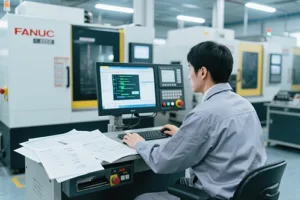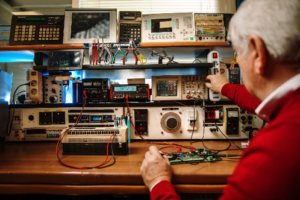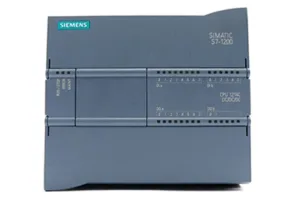Blog
Understand PLC and know the fifteen basic knowledge points to know about PLC for automation
PLC: The core of industrial automation
In today’s industrial automation field, PLC (Programmable Logic Controller) has become an indispensable part. As a computer designed specifically for industrial environments, PLC plays an important role in various production processes.
PLC, the full name of programmable logic controller, is an electronic system for digital computing operations, designed for industrial environments. It uses programmable memory to perform logical operations, sequential control, timing, counting and arithmetic operations in industrial environments, and controls various types of machinery or production processes through digital or analog input/output.
Nowadays, the development of industrial production and technology cannot be separated from the automation control of PLC. In actual production applications, PLC greatly saves the cost of industrial control and strengthens the centralized management and automatic control of equipment. In the face of such an important PLC, if you can learn and master it, you need to have a solid foundation of PLC knowledge.
Let’s talk about fifteen basic PLC knowledge points that everyone who does automation knows:
1. Briefly describe the definition of programmable controller (PLC).
- A programmable controller (PLC) is an electronic device designed for digital computing operations in industrial environments. It uses a programmable memory to store instructions for sequential operations, logical operations, counting, timing and arithmetic operations, and can control various types of machinery or production processes through digital or analog output and input.
- PLC and its related peripherals should be designed in accordance with the principle of being easy to form an integral part of the industrial control system and easy to expand its functions.
2. From the composition of PLC, in addition to memory, CPU and communication interface, what other interfaces are directly related to the industrial site? And explain their main functions.
- Output interface: The execution result of the program is output through the optocoupler and output components (relays, thyristors, transistors) of the output interface to control the connection or disconnection of the external load.
- Input interface: Receives the signal of the controlled device and drives the internal circuit to connect or disconnect through the optocoupler and input circuit.
3. What are the components of the basic unit of PLC? What are their functions?
- CPU: the core component of PLC, directing PLC to perform various tasks. Such as receiving user programs and data, diagnosis, executing execution programs, etc.;
- Communication interface: information exchange with other devices such as monitors and printers through the communication interface;
- Power supply.
- Memory: storage system and user programs and data;
- I/O interface: the connection component between PLC and the controlled object in the industrial production site, used to receive signals from the controlled equipment and output the execution results of the program;
4. What is the scanning cycle of PLC? What is it mainly affected by?
- The scanning process of PLC includes five stages: internal processing, communication service, input processing, program execution, and output processing. The time required for scanning these five stages once is called the scanning cycle.
- The scanning cycle is related to the CPU running speed, PLC hardware configuration and the length of the user program.
5. How does PLC execute user programs? What stages does the user program execution process include?
PLC uses cyclic scanning to execute user programs. The execution process of user programs includes input sampling stage, program execution stage and output refresh stage.
6. What are the types of PLC switch output interfaces? What are their characteristics?
- Transistor output type: Generally, it can only carry DC loads, with fast response speed and high action frequency;
- Thyristor output type: Generally, it can only carry AC loads, with fast response speed and high action frequency;
- Relay output type: Generally, it can carry AC and DC loads, but its response time is long and the action frequency is low.
7. According to the structural type, what are the types of PLC? What are their characteristics?
- Modular type: The various parts of the PLC are divided into several separate modules, and different modules can be selected as needed to form a system. It has the characteristics of flexible configuration, convenient maintenance and expansion. Generally, large and medium-sized PLCs adopt this structure. Modular PLC consists of a frame or substrate and various modules, and the modules are installed on the sockets of the frame or substrate.
- Integrated type: The power supply, CPU, and I/O components are all concentrated in one chassis, with low price and compact structure. Generally, small PLCs adopt this structure;
- Stacked type: Combining the characteristics of integrated type and modular type, the power supply, CPU, I/O interface, etc. of the stacked PLC are also independent modules, but they are connected by cables, making the system not only flexible in configuration but also compact in size.
8. What are the advantages of PLC control system compared with relay control system?
- From the perspective of control speed, the contacts of PLC are actually triggers, and the execution time of instructions is in microseconds;
- From the perspective of control method, PLC uses program method to realize control, which is easy to change or increase control requirements, and the contacts of PLC are unlimited;
- From the perspective of maintainability and reliability, PLC uses microelectronic technology, which is highly reliable, and the self-check function can be detected in time.
- From the perspective of working mode, PLC adopts serial working mode to improve the anti-interference ability of the system;
- From the perspective of timing and counting, PLC uses semiconductor integrated circuits as timers, and the clock pulse is provided by a crystal oscillator, with high delay accuracy and wide range. PLC has a counting function that the relay system does not have;
9. Why does PLC have output response lag? How to improve I/O response speed?
Because PLC adopts a cyclic scanning working mode of centralized output and centralized sampling, the state of the input terminal can only be read in the input sampling stage of each scanning cycle, and the execution result of the program is only sent out in the output refresh stage; secondly, the output and input delay of PLC, the length of the user program, etc. can all cause output response lag.
To improve direct input sampling, output refresh, or I/O input sampling, output refresh, as well as interrupt input and output and intelligent I/O interface and other methods.
10. How to choose PLC?
- Model selection should be considered from the aspects of installation method, structural form, functional requirements, reliability requirements, response speed, model uniformity, etc.;
- Capacity selection should be considered from the two aspects of user storage capacity and I/O points;
- I/O module selection includes the selection of switch quantity and analog quantity I/O modules, as well as the selection of special function modules;
- The selection of other equipment such as power modules and programmers should also be considered.
11. What are the types of soft relays inside Siemens series PLC?
Auxiliary relays, input relays, output relays, status registers, counters, timers, data registers.
12. Briefly describe the characteristics of PLC centralized output and centralized sampling working mode. What are the advantages and disadvantages of using this working mode?
- Centralized output: In a scan cycle, only in the output refresh phase will the output-related status in the output image register be transferred to the output latch, and the output interface will be refreshed. In other phases, the output status is always stored in the output image register. Because this working mode can improve the system’s anti-interference ability and enhance the system’s reliability, it will only cause a lag in the PLC input/output response.
- Centralized sampling: In a scan cycle, the sampling of the input status is only performed in the input sampling phase, and the input end will be blocked when entering the program execution phase.
13. What kind of working mode does PLC use? What are the characteristics?
PLC adopts centralized output, centralized sampling, and cyclic scanning working modes.
Features:
- Concentrated output means that in a scan cycle, the PLC only transfers the output-related status in the output image register to the output latch in the output refresh phase, and refreshes the output interface. In other phases, the output status is always saved in the output image register.
- Concentrated sampling means that in a scan cycle, the PLC samples the input status only in the input sampling phase, and the input end will be blocked when entering the program execution phase.
- Cyclic scanning means that the PLC needs to perform multiple operations in a scan cycle. It uses time-sharing scanning to execute one by one in sequence, and repeats the operation over and over again.
14. What are the main components of the electromagnetic contactor? Briefly describe the working principle of the electromagnetic contactor.
The electromagnetic contactor is generally composed of contacts, electromagnetic mechanisms, release spring mechanisms, arc extinguishing devices, brackets and bases.
The contactor works according to the electromagnetic principle:
when the electromagnetic coil is energized, the coil current generates a magnetic field, which causes the static iron core to generate electromagnetic attraction to attract the armature, and drives the contact to move, so that the normally closed contact is disconnected and the normally open contact is closed. The two are linked. When the coil is powered off, the electromagnetic force disappears, and the armature is released under the action of the release spring, so that the contacts are restored, that is, the normally open contacts are disconnected and the normally closed contacts are closed.
15. Briefly explain the differences between the working principles of the PLC system and the relay contactor system.
The control methods are different, the components are different, and the number of contacts is different.




